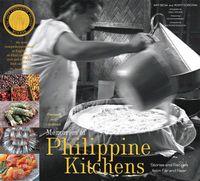Advertisement
The Historical Significance of Ensaimada
Appears in
By Amy Besa and Romy Dorotan
Published 2006
The Philippine ensaimada is a coiled brioche sweet roll that traces its origins to Mallorca in the Balearic Islands of Spain. Alan Davidson, in his Oxford Companion to Food, writes that ensaimada came from the Mallorquinese word saim, which means pork lard. How this sweet bread came to Mallorca is a bit muddled, but some sources point to either a Jewish or Arab bread called gulema that was shaped like a turban and whose dough was made with olive oil.
In the late 1300s and early 1400s, the Spanish Inquisition forced Jews to either leave Spain or convert to Christianity (Conversos) if they wanted to stay. In order to ferret out baptized Jews and their descendants who were suspected of secretly practicing their Jewish rituals and religiously prescribed diets (Marranos), the Catholic Church mandated the use of pork and pork products. This explains the predominance of pork lard in breads and dishes of Spain following this period. To this day, the official recipe of Mallorca ensaimada requires the use of pork lard as its main ingredient. Families in the Philippines who take pride in their ensaimada recipes now use butter instead of lard, unaware of this bit of historical significance to their beloved sweet roll.

